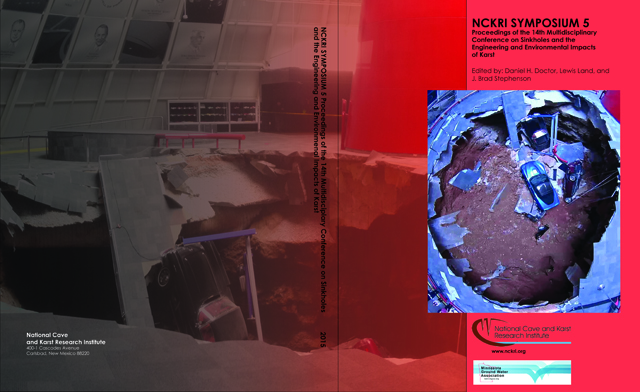Abstract
This paper presents an application of time-domain surface-based waveform tomography for detection of voids in karst terrain. The measured seismic surface wave fields were inverted using a full waveform inversion (FWI) technique, based on a finite-difference solution of 2-D elastic wave equations and the Gauss-Newton inversion method. The FWI was applied to real experimental data sets collected from twelve test lines at a karst site in Florida. Two of the test lines were located next to open karst chimneys to image their extent. Ten other test lines were located in an open and flat area without any void indication from the ground surface to detect an unknown void. The inversion results show that the waveform analysis was able to delineate embedded low-velocity anomalies, a void, and highly variable bedrock both laterally and vertically. Locations of the low-velocity anomalies were consistent to the known open chimneys observed from the ground surface. The unknown identified void was confirmed by an independent standard penetration test (SPT).
DOI
http://dx.doi.org/10.5038/9780991000951.1036
Included in
Detection of Voids in Karst Terrain with Full Waveform Tomography
This paper presents an application of time-domain surface-based waveform tomography for detection of voids in karst terrain. The measured seismic surface wave fields were inverted using a full waveform inversion (FWI) technique, based on a finite-difference solution of 2-D elastic wave equations and the Gauss-Newton inversion method. The FWI was applied to real experimental data sets collected from twelve test lines at a karst site in Florida. Two of the test lines were located next to open karst chimneys to image their extent. Ten other test lines were located in an open and flat area without any void indication from the ground surface to detect an unknown void. The inversion results show that the waveform analysis was able to delineate embedded low-velocity anomalies, a void, and highly variable bedrock both laterally and vertically. Locations of the low-velocity anomalies were consistent to the known open chimneys observed from the ground surface. The unknown identified void was confirmed by an independent standard penetration test (SPT).

